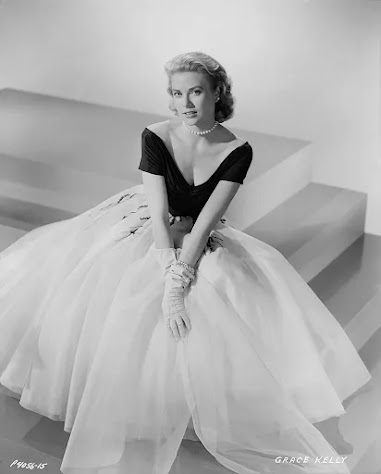The concept of a finishing school is one of my favorite topics to
write, read, and dream about. Whenever I come across a book set in a
finishing school, or any type of girls school for that matter, I just
have to read it! Sigh, I would have loved to attend one of these
schools, where bad and unsightly habits are buffed out and students are
polished into their best, most elegant and feminine selves.
Imagine my excitement when I stumbled upon a television program all about this topic. In each series of Ladette to Lady,
a group of rowdy young women are sent to a British finishing school to
be molded into elegant and dignified young ladies. Yes, it is a reality
show and a bit of a guilty pleasure, but aside from the inevitable
drama, it really does inspire me. I especially love the staff, firm but
maternal women who run the school with such precision and dedication to
their craft and their students. They really try to get their students to
see another way of life, bless them!
There are some ground rules that each girl is expected to follow: no cursing, smoking, or gum chewing; no drinking to excess; conduct yourself appropriately at all times; and follow curfew (in bed, lights out by 10pm). When girls arrive, a copy of Debretts etiquette guide is placed on the bed as a reference.
I'm always fascinated by the topics they would have taught in such a school, the classes they would have attended... I managed to catch a glimpse of the school schedule in a few episodes. Of course I had to snap a photo, and take notes during each lesson. We're never too old to improve ourselves :)
 |
| Shoulders back, chest out, chin level with the floor... ! |
Deportment: Learning to walk and sit up straight are of utmost importance. The girls try the old-fashioned trick of walking with a book on their head to some success... How to sit as a lady is what would be known as the "duchess slant," knees together with one ankle tucked behind the other in a slight angle. When walking in heels, your steps should be small and light, not clomping like a clydesdale!
Elocution: A clear
and pleasant voice is cultivated. Nasal sounds are to be banished,
instead vowels are emphasized with the help of a bone prop. The scenes
were quite reminiscent of My Fair Lady which made me laugh a lot!
Dancing: Familiarizing yourself with dance demonstrates grace, culture, and refinement.
Domestic arts: The girls are caught to sew camisoles and knickers, and create beautiful flower arrangements. Of course these skills would have been essential to any young woman looking to marry, have families, and run their own homes.
Cookery: Learning to cook a proper meal
was a big challenge for many of the girls. They tried their hand at many
different meals, including roast dinners, souffles, soups, and a
variety of elaborate desserts.
Knowledge of fine wines:
Knowing how to pair a wine your meal completes the experience. A wine
tasting course was a welcome activity for the girls... some of whom who
cheekily refused to spit it out!
Table manners: Sit up
straight with elbows off the table, napkin in lap. You should take
small sips of your drink throughout the meal. Pace yourself to allow
time for conversation in between bites. Always try the food served to
you in order not to offend your host.
Social etiquette:
A party is like a dance. The goal is to pair the correct people up to
create a natural flow of conversation. Take interest in others, ask open
ended questions to encourage a buzzing atmosphere. A lady drinks on
certain occasions and never to excess. You must learn to control your
temper when presented with challenges. Losing your composure, or
drinking too much, is the fastest way to ruin your reputation!
Sexual etiquette:
Men are hunters by nature; you have to be that prize. The girls were
taught to show interest in potential suitors without acting too
"available." Be pleasant with a ready smile. Conversations should flow
naturally... with a bit of light flirting! Show affection and interest
towards him, but always keep a little mystery. If you leave him wanting
more, he will pursue you at every opportunity.
I'm grateful my own parents did their best to teach me to be polite, respectful, and to always act with dignity. Wouldn't the world be a little lovelier if we were all taught these lessons young? It's not necessarily about changing who you are, it's about polishing yourself to enhance your own beauty, and who doesn't want that? A well-cultivated degree of grace and femininity is a very powerful thing indeed...
 |
| Grace Kelly, the epitome of ladylike. |
— TYG










